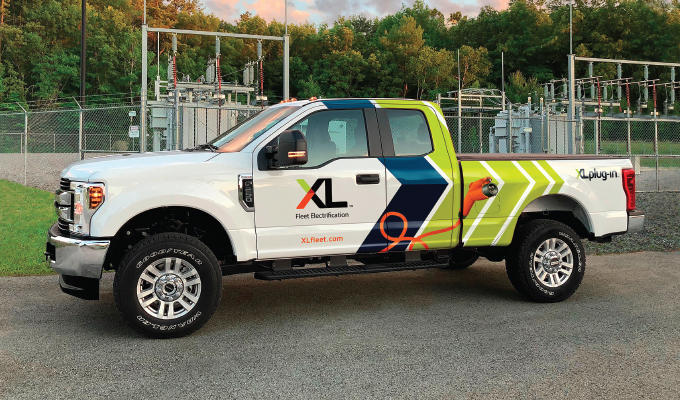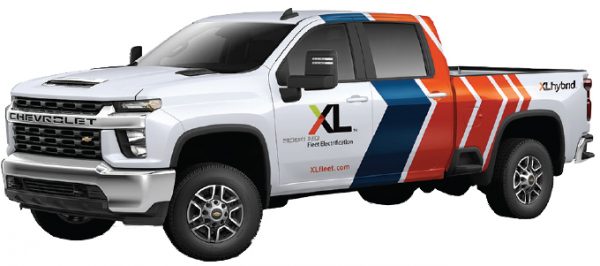In 2018, the US Environmental Protection Agency and other independent climate researchers confirmed that transportation is now the leading contributor to greenhouse gas (GHG) emissions in the country, and that trend shows no signs of slowing down.
As a result, commercial companies and municipalities of all sizes stepped up and took a leadership role in curbing their own carbon emissions by publicly setting ambitious carbon reduction targets designed to encourage greater adoption of greener vehicles in their fleet operations.
Electrified fleet vehicles, including battery electric (BEV), hybrid electric (HEV), and plug-in hybrid (PHEV) options, continue to emerge as the most popular category of alternative propulsion technologies used to combat this issue.
However, with the significant infrastructure and capital cost challenges preventing the broad adoption of BEV solutions for the foreseeable future, green-minded fleets have deployed large volumes of hybrids and plug-in hybrids in order to make significant and immediate improvements in their GHG metrics. While they don’t classify as a zero-emission vehicle (ZEV) that many fleets are looking to adopt over the long term, HEVs and PHEVs offer a number of advantages that allow them to be deployed in large scale today.
FLEET-READY
Hybrid and plug-in hybrid electric fleet vehicles are a key solution for fleets looking to reduce their operational costs and lower their carbon footprint. They can provide immediate fuel economy and sustainability value while effectively overcoming the most pressing challenges of battery electric vehicles.
- Minimal infrastructure requirements. Hybrid vehicles continue to leverage the vehicle’s internal combustion engine, so there’s no range anxiety to consider with their operation. Since they generate their own supplemental power through regenerative braking without needing to be plugged into any charging port, they provide a completely self-sufficient means of improving mpg performance. Plug-in hybrids also leverage the factory engine and regenerative braking while having additional battery capacity that can be powered by plugging the vehicle into a standard charging port (either a level 2 EVSE or a 120v household outlet).
- ROI without incentives. While federal or state incentive programs are typically needed to purchase even a single battery electric commercial fleet vehicle, HEVs and PHEVs can provide a meaningful return on investment (ROI) without incentives thanks to their lower capital purchase costs. Many incentive programs do include these vehicles, which helps to boost their investment value even more.
- Wide range of vehicles and applications. When hybrid and plug-in hybrid electric drive solutions are offered as aftermarket upfits, they can be installed onto a wide range of vehicles from multiple OEMs. As a result, fleets can quickly and easily turn the same types of vans, shuttle buses, pickup trucks, and service vehicles they’re already using into electrified versions of those units.
BEV ACCELERATORS
There’s no question that the commercial fleet industry is progressing toward an all-electric future. As battery cost, vehicle availability, and infrastructure maturity continue to improve over time, we will see more widescale adoption of these zero-emission, low maintenance
vehicles on our streets and highways.
That said, a transportation infrastructure built for internal combustion engines (ICE) cannot be replaced overnight. We are likely decades away from a comparable adoption rate between electric and ICE-powered vehicles on the road.
In the meantime, hybrids and plug-in hybrids can serve as an accelerating technology that helps propel the industry into an all-electric future. These readily available solutions offer a number of advantages that can actually accelerate BEV adoption as those technologies and supporting infrastructure continue to develop.
- Immediate results with longer-term demand. Adopting commercial HEVs and PHEVs now can help drivers, maintenance teams, and fleet managers become accustomed to operating and maintaining electrified vehicles immediately, helping create further demand for electric powertrains down the road.
- Strong installation and service capacity. Aftermarket electrification providers like XL Fleet have built comprehensive networks throughout North America where customers can buy, install, and service their electrified vehicles from the same location—often from the same dealer or upfitter they’re already working with.
- Greater charging efficiency with minimal infrastructure. PHEVs typically charge more quickly than their all-electric counterparts. A single EVSE station can often charge multiple plug-in hybrid vehicles in the same time required to fully charge an all-electric vehicle. This maximizes shift efficiency and can help defer costly power system upgrades needed to support a BEV fleet.
SUSTAINABILITY
For over ten years, XL Fleet has provided commercial and municipal fleet managers with hybrid and plug-in hybrid electric drive solutions for a wide range of vehicles and applications. XL Fleet customers have driven well over 100 million fleet miles with the company’s electrification systems installed on Class 2-6 vans, pickups, shuttle buses, delivery trucks, and specialty vehicles from Ford, GM, and Isuzu. XL’s hybrid systems are installed on some of the world’s largest and most successful commercial fleets, and the company’s plug-in hybrid electric drive technology was named one of TIME magazine’s best inventions of 2019.
As the commercial transportation industry slowly evolves to adapt to a future in which all-electric propulsion is the norm and not the exception, hybrid and plug-in hybrid fleet vehicles will remain an integral part of most fleets’ sustainability plans for the foreseeable future. They are widely available, easily deployed, and make an immediate sustainability impact—especially when replacing older, traditional gas- and diesel-powered vehicles.
In this way, hybrid and plug-in hybrid electric fleet vehicles can continue to complement BEVs as part of a comprehensive fleet electrification solution that can be adopted immediately, deployed for decades, and help speed the adoption of cleaner, greener vehicles for all types of fleets.
ABOUT THE AUTHOR
Eric Foellmer is the director of marketing at XL Fleet. Find out more, visit www.xlfleet.com.





